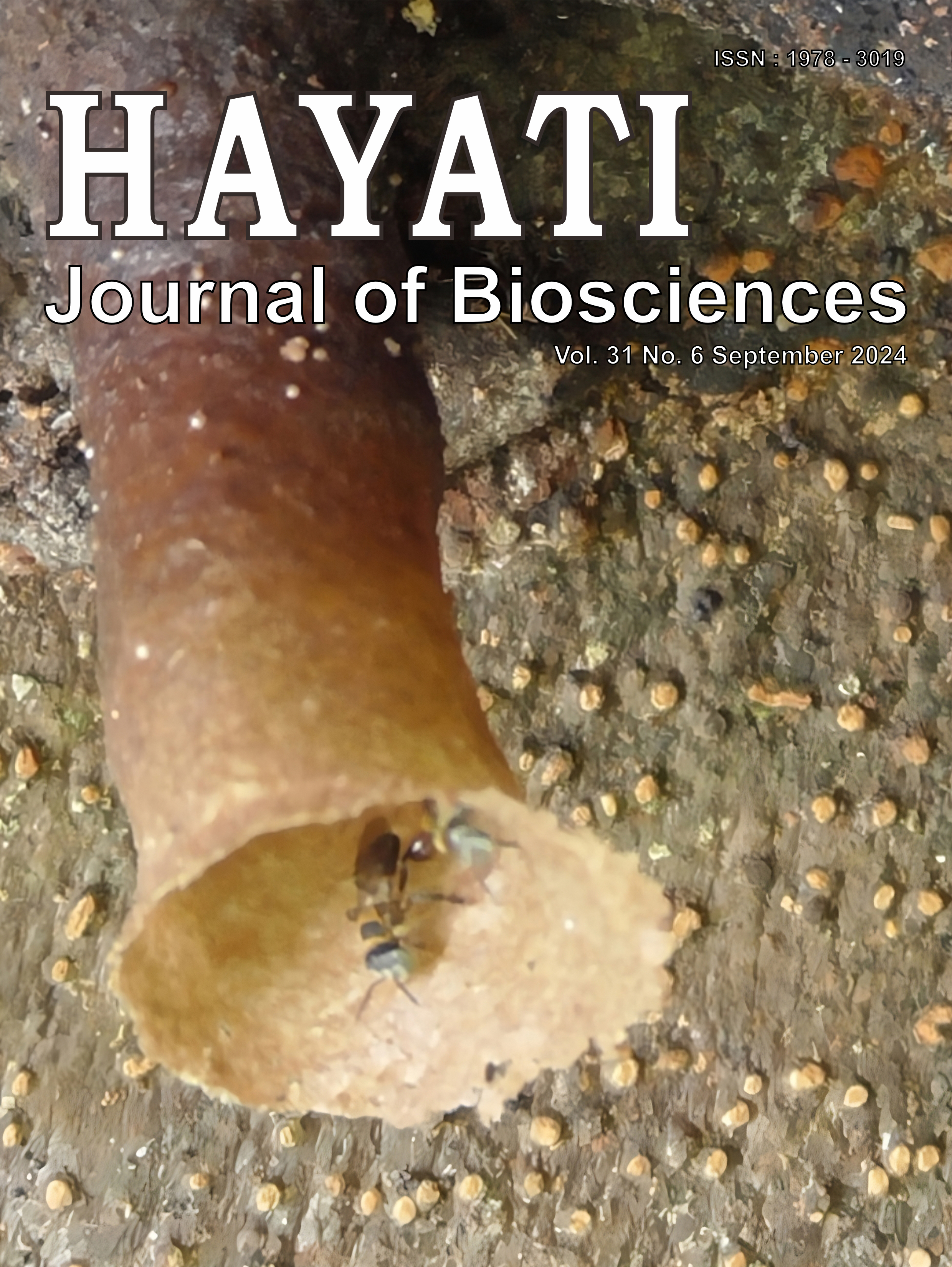Flowering Phenology and SiDREB2-based SNAP Marker-assisted Hybridity Confirmation for Artificial Hybridization of Indonesian Foxtail Millet (Setaria italica L. Beauv) Genotypes
Abstract
Foxtail millet hybrid development encounters challenges due to its self-pollinating nature, small florets, and tool availability for confirming true hybrid. Our research aimed to assess flowering phenology and explore artificial hybridization employing SiDREB2 based-SNAP marker. The research consisted of three experiments. The first experiment focused on the panicle phenology of foxtail millet, while the second experiment focused on floret phenology and reproductive organs. The artificial hybridization successfulness was validated with SNAP markers based on the SiDREB2 gene in the third experiment. Observations on two genotypes (ICERI-5 and ICERI-6) revealed panicle initiation at 49–69 days after planting (DAP), with anthesis occurring 6 days after panicle emergence (DAPE). Florets exhibited the formation of reproductive organs at 3 DAPE, delineating distinct stages of pollen development leading up to anthesis. Our findings emphasized the significance of implementing male-sterile induction treatment at 4 DAPE to regulate pollen development for successful hybridization by 6 DAPE. The hybrid evaluation revealed varied germination rates and confirmed hybrid percentages across different crossing series, validated by SiDREB2-based SNAP marker. ICERI-5×Botok-4 exhibited high germination but a low confirmed hybrid percentage, while Botok-4×ICERI-5 and Botok-10×ICERI-6 showed the opposite trend. Reciprocal crossings showed unilateral incompatibility in confirmed hybrid percentage.
Downloads
Copyright (c) 2024 Rizki Bagus Nugroho, Uswatun Chusnah, Willy Bayuardi Suwarno, Sintho Wahyuning Ardie

This work is licensed under a Creative Commons Attribution-NonCommercial 4.0 International License.
HAYATI J Biosci is an open access journal and the article's license is CC-BY-NC. This license lets others distribute, remix, tweak, and build upon author's work, as long as they credit the original creation. Authors retain copyright and grant the journal/publisher non exclusive publishing rights with the work simultaneously licensed under a https://creativecommons.org/

























.png) IPB University
IPB University Department of Biology
Department of Biology The Indonesian Biological Society
The Indonesian Biological Society 

